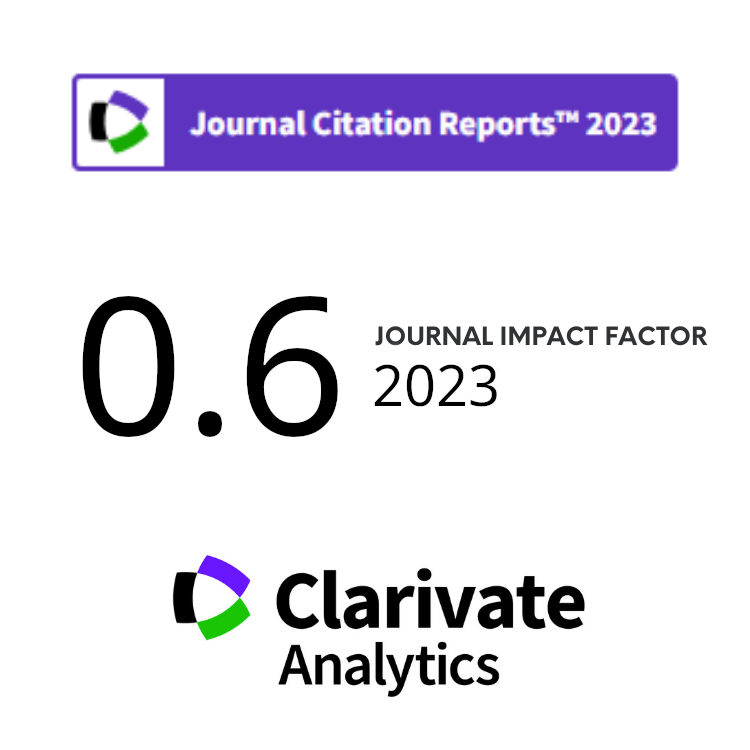Radon Concentration in Biological Samples of Smokers and Non-smokers Using Lexan Detector
Abstract
Full Text:
PDFReferences
A. A. Abojassim, Atom Indones. 47 (2021) 1.
H. Syaeful, I. G. Sukadana, and A. Sumaryanto, Atom Indones. 40 (2014) 33.
Y. Y. Celen, S. Oncul, B. Narin et al., J. Radiat. Res. Appl. Sci.16 (2023) 100716.
V. Hansen, D. Petersen, J. Søgaard-Hansen et al., J. Environ. Radioact. 257 (2023) 107080.
H. A. Kadhim, I. T. Al-Alawy and A. F. Mkhaiber, Iraqi J. Sci. 64 (2023) 3935.
J. Mackay and M. P. Eriksen, World Health Organization (2002).
S. R. Schayer, Q. Qu, Y. Wang et al., Cancer Epid. Biom. Prev. 19 (2010) 338.
C. R. Singh and K. Kathiresan, Asian Pac. J. Trop. Biomed. 5 (2015) 162.
S. K. Das, Mol. Cell. Biochem. 253 (2003) 159.
S. Syarbaini, M. Makhsun, W. Wahyudi et al., Atom Indones. 45 (2019) 81.
United States Environmental Protection Agency, Environmental Radiation Data, Report 71 (1992).
H. A. Kadhim, I. T. Al-Alawy and A. F. Mkhaiber, Radiochim. Acta. 111 (2023) 231.
Anonymous, Development Strategy for the Holy Province of Najaf 2008-2012, Holy Najaf Provincial Council, Najaf (2008) 1.
A. A. Abojassim, Q. B. Muhamad, N. A. Jafer et al., Jordan J. Phys. 15 (2022) 353.
S. Nakhaee, A. Amirabadizadeh, M. Ataei et al., Environ. Sci and Pollut. Res. 28 (2021) 37672.
N. F. Salih, Z. M. Jafri and M. S. Aswood, J. Radiat. Res. Appl. Sci. 9 (2016) 332.
M. A. Qayyum and M. H. Shah, Biol. Trace Elem. Res. 158 (2014) 305.
Z. Karpas, O. Paz-Tal, A. Lorber et al., Health Phys. 88 (2005) 229.
R. J. Dosh, A. K. Hasan and A. Abojassim, J. Turkish Chem. Soc. Sect. Chem. 10 (2023) 1045.
S. Paul, G. S. Sahoo, S. P. Tripathy et al., Radiat. Phys. Chem. 201 (2022) 110415.
R. R. Muneam and A. A. Abojassim, Atom Indones. 49 (2023) 39.
H. N. Alkhafaji, A. A. Abojassim and A. A. Alkufi, J. Phys.: Conf. Ser. 1234 (2019) 012002.
R. J. Dosh, A. K. Hasan and A.Abojassim, J. Turkish Chem. Soc. Sect. A: Chem. 10 (2023) 1045.
H. A. U. Mohammed, H. S. Hussain and A. A. Abojassim, AIP Conf. Proc. 2386 (2022).
World Health Organization, WHO Handbook on Indoor Radon (2009).
M. Tirmarche, J. D. Harrison, D. Laurier et al., Ann. ICRP 40 (2010) 1.
Z. Zdrojewicz and J.Strzelczyk, Radon Treatment Controversy, Dose-Response 4 (2006) 106.
U. S. Government Publishing Office (GPO), Appendix B to Part 136-definition and Procedure for The Determination of Method Detection Limit Rev, in: Code of Federal Regulation, Vol. 23 (2009).
H. K. Obaed and M. S. Aswood, IOP Conf. Ser.: Mater. Sci. Eng. 928 (2020) 072043.
E. J. Park, H. Lee, H. C. Kim et el., Int. J. Environ. Res. Public Health. 17 (2020) 2946.
E. N. M. Hassan and S. O. Al-Rammahi, WBPH 23 (2023) 154.
F. Girault and F. Perrier, Sci. Total Environ. 660 (2019) 421.
DOI: https://doi.org/10.55981/aij.2024.1402
Copyright (c) 2024 Atom Indonesia

This work is licensed under a Creative Commons Attribution-NonCommercial-ShareAlike 4.0 International License.











